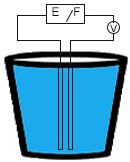
Liquid level sensors, also called liquid level switches, are designed to change state when immersed in a liquid. They are used to determine if a liquid or oil exists at a particular level in a container.
What are the different kinds of liquid level sensors?
The different kinds of liquid level sensors include
- Optical
- Capacitive
- Conductive
- Diaphragm
- Float
1. Optical Liquid Level Sensors
Optical sensors work by are solid state. They use an infra-red LED and phototransistor which are optically coupled when the sensor is in air. When the sensing tip is immersed in liquid, the infra-red light escapes making the output change state. These sensors can detect the presence or absence of almost any liquid. They are not sensitive to ambient light and are not affected by foam when in air or by small bubbles when in liquid. This makes them useful where the state change must be quickly and dependably noted, and where they can function reliably for extended periods without maintenance.
For example, the SST Optomax Digital Liquid Level Sensor is a popular low-cost, low-maintenance infra-red LED sensor.
The disadvantage of an optical liquid level sensor is that it can only determine if liquid is present or not present. If variable levels are required, (25%, 50%, 100%, etc.) each requires an additional sensor.
2. Capacitive Liquid Level Sensors
Capacitive liquid level switches use 2 conductive electrodes (usually made of metal) in a circuit that are a short distance from each other. When the electrodes are immersed in a liquid it completes a circuit.

The advantage of a capacitive liquid level switch is that it can be used to determine the rising or falling of liquid in a container. By making the electrodes the same height as the container, the capacitance between the electrodes can be measured. No capacitance means no liquid. Full capacitance means a full container. Both “empty” and “full” measurements must be recorded, then a meter calibrated with 0% and 100% to show the liquid level.
Although capacitive liquid level sensors have the advantage of no moving parts, one of their disadvantages is that corrosion of the electrodes will change the electrode’s capacitance requiring either cleaning or recalibration. They are also more sensitive to the type of liquid used.
3. Conductive Liquid Level Sensors

Conductive liquid level switches are sensors with an electrical contact at a specific liquid level. Two or more insulated electrodes with exposed tips are used inside a pipe lowered into the liquid. A longer electrode carries a low voltage, while a shorter one is used to complete the circuit when the liquid level rises to meet it.
Like capacitive liquid level switches, conductive liquid level switches depend on the conductivity of the liquid. Therefore, they are only useful for measuring certain types of liquids. In addition, these sensors tips must be cleaned at regular intervals to reduce fouling.
4. Diaphragm Liquid Level Sensors
Diaphragm or pneumatic liquid level switches rely on air pressure to push a diaphragm which engages a micro-switch inside the body of the unit. As the liquid level rises, the internal pressure inside a detecting pipe rises until the micro-switch or a pressure sensor is activated. As the liquid level falls, the air pressure also falls and the switch is disengaged.

The advantage of a diaphragm-based liquid level switch is that no power source inside the tank is required, it can be used with many types of liquids, and since the switch does not come in contact with the liquid. However, because it is a mechanical device, over time it will require maintenance.
5. Float Liquid Level Sensors

Float switches are the original liquid level sensors. They are mechanical devices. A hollow float is connected to an arm. As the float rises and falls in the liquid, the arm is pushed up and down. The arm may be connected to a magnetic or mechanical switch to determine on/off, or it may be connected to a gauge that rises from full to empty as the liquid levels falls.
The ball float switch in a toilet tank is the most common type of float liquid level sensor used. Sump pumps also use float switches (see right) as a cost-effective way to measure the water level in a basement sump pit.
Float switches can measure any type of liquid, and can be designed to require no power to operate. The disadvantage of float switches is that they are larger than other types of switches and because they are mechanical, must be services more often than other liquid level switches.
Diaphragm sensor image by Duk, licensed under the GNU Free Documenation License.

